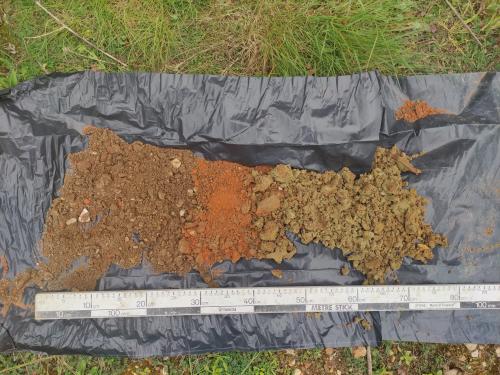Remediation Strategy - Surrey
Introduction:
GO Contaminated Land Solutions, are experts in planning effective remediation strategies for land development in Surrey. Writing a cost effective remediation strategy requires an understanding of not just the environmental issues but also the engineering of the project. We look at the project in the round to ensure that we deliver a cost effective strategy for your project.
Dealing with the complexities of contaminated land can be daunting, with potential legal, environmental, and financial implications at stake. That's where we step in. At GO Contaminated Land Solutions, our specialist team provides remediation strategies designed to mitigate risks and maximise the value of your projects.
We work closely with you to ensure you have a comprehensive understanding of the proposed remediation strategy, empowering you to make informed decisions every step of the way. When the strategy is prepared we will provide you with a checklist to aid you in collecting the data required for the final sign off and are always available to offer guidance on any issues that arise during the remediation process.
With GO Contaminated Land Solutions as your partner, you can confidently tackle even the most challenging contaminated land projects, knowing that we have your back with a robust and cost-effective remediation strategy. Let us help you pave the way to a more sustainable future for your developments in Surrey.
What is the objective?
The objective is to ensure the site is suitable for the proposed use and that there are no elevated risks to site users, neighbours or the environment. The aim is not to create a perfectly clean site or uncontaminated site. All manner of contaminants exist in the ground which generally do not cause any significant harm; however in certain circumstances and in certain concentrations they may cause harm. The aim is to prevent the contaminants reaching the people, plants or waterways that might be adversely affected.
The appropriate remediation strategy will be influenced by the site use, remediation for a commercial use would probably be very different to that for a residential use, even for the same land.
How might this be done?
Frequently it is done by removing the contaminated soil and disposing of it in a licensed landfill.
It can sometimes be done by treating the soil on site. This may or may not be practical depending upon the type of contaminants and size of site.
It may be possible to introduce a barrier between the contaminants and people who will be using the site. This barrier may be a purpose made membrane, a hard surface such as block paving or asphalt or a suitable depth of clean soil.
The contaminated areas may be suitable for some uses but not others, in which case it may be possible to amend the site layout so that for example the contaminated area is used as a car park instead of gardens.
In the case of ground gas or vapours the solution is often to introduce a membrane to prevent the gas or vapour entering the buildings where it could cause harm.
During the remedial works it is beneficial to have independent monitoring to ensure the works are on track to achieve approval by the local authority, NHBC or other regulator.
What happens when the remedial works are complete?
Within the Remediation Strategy there will be a verification plan setting out the requirements for testing, monitoring and documentation required to demonstrate satisfactory remediation. On completion of remediation the Verification Report has to be completed.
Former Public House in Camberley
The development comprised a four-storey mixed use block with retail and office space at ground level and residential above, with parking facilities, cycle and bin storage, and some small strips of landscaping to the perimeter.

At the time of the phase 1 walkover the former building had been demolished leaving a level area of bare earth, the remainder of the site was asphalt surfaced. The former building had occupied the greater part of the north of the site, with a small forecourt fronting onto London Road and a passageway along the west side of the site and parking to the rear.
GO CLS undertook a desktop study and subsequently an intrusive phase 2 investigation which identified elevated levels of lead in the soil. A remediation strategy was prepared, in this instance the remedial works required were limited to the proposed landscaped areas, requiring suitably robust construction for the hard surfacing and clean sub-soil and topsoil for the soft landscaped areas.